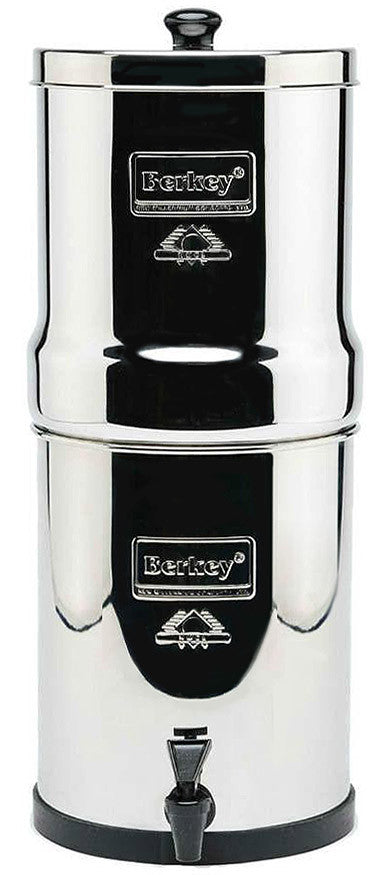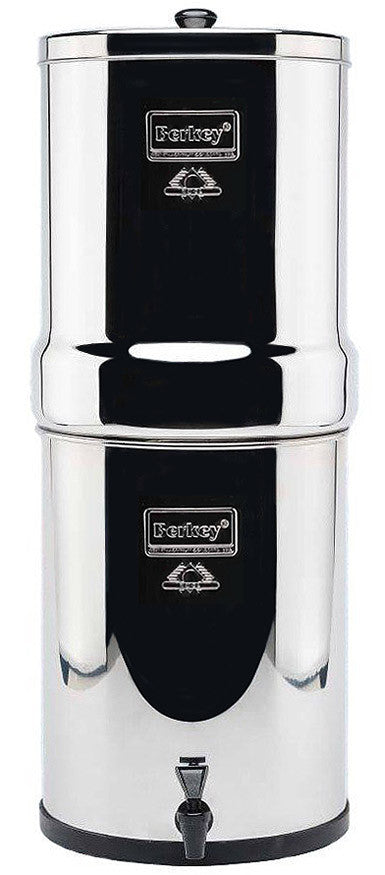Water is a universal solvent that can attract several other compounds and chemicals. The total dissolved solids (TDS) are the number of particles in water.
However, this is not necessarily a good indicator of the health and safety of your drinking water. A high TDS reading doesn't necessarily mean that water quality is poor, as it also reflects the number of minerals and salts in the water.
In this article, you will learn about TDS readings.
TDS in Water
Total dissolved solids (TDS) are organic and inorganic materials such as minerals, metals, and ions. When soluble substances encounter water anywhere, they can be washed away together with water.
- Natural springs
- Chemical treatment for the water supply from sewage systems
- Runoff from road salts
- Yard chemicals
- Fertilizers
- Plumbing at home
TDS is typically mentioned for freshwater systems since salt consists of some ions that define TDS. Since TDS is not a primary pollutant, it is used as a general indicator of various chemical and mineral components in the water.

TDS Measurement
TDS reading provides an easy and accessible way of learning the basic composition of your water. It also became a standard tool for assessing water quality. It uses a measuring device called a TDS meter.
The Total Dissolved Solids (TDS) are measured as the volume of water in milligrams per liter (mg/L). It is also expressed in parts per million (ppm).
The average TDS level ranges from 50 ppm to 1,000 ppm. According to the EPA's secondary drinking water regulations, 500 ppm is the recommended maximum TDS for drinking water. If the measurement exceeds 1,000 ppm, it is already unsafe. If the TDS reading exceeds 2,000, a filtration system cannot handle it.

TDS Reading Chart
|
<50-250 ppm |
Considered low: missing some of the minerals that are essential to your health |
|
300-500 ppm |
Perfect: This level is the optimal amount for TDS in drinking water |
|
600-900 ppm |
Not great: Consider a reverse osmosis system to remove your TDS |
|
1000-2000 ppm |
Terrible: Not recommended or safe for use |
|
>2000 |
Worst: A TDS level above 2000 ppm is entirely unsafe, and household filters can not handle this level of contamination |
-
Measure the TDS of raw feed water by immersing the TDS tester's probes in a cup or glass of TAP water and recording the results.
-
Measure the TDS of your RO water by filling a cup or glass with RO water (from the RO faucet) and immersing the TDS tester's probes in the water. Record the results.
-
Calculate percent rejection using the following formula:

Example: Tap TDS = 260 ppm RO TDS = 20 ppm Rejection = [(260 - 20) / 260] x 100 = [240/260] x 100 ≈ (.923) x 100 = 92.3
Note: If your RO system is new or the membrane has been replaced, do not test the first RO water tank. The first tank will contain sanitizer and possibly carbon fines from your new filters, which may cause a false reading.
What TDS Does Not Reflect
TDS readings do not reflect the safety of your water. Even when the reading is 0, the water could still contain harmful toxins. A TDS test would not detect heavy metals, pharmaceuticals, pesticides, or VOCs. In addition, it won't reflect the presence of harmful bacteria, viruses, or spores.
What TDS Reading Does Not Mean
Some marketing strategies utilize TDS meters to deceive buyers into believing they need an expensive, state-of-the-art water filter to reduce or minimize the TDS reading on the meter. This may not be the case at all.
The fact is that TDS reading is not a true reflection of the quality and safety of the water.
A TDS reading is not always a good indicator of whether to buy an expensive filtration system if the water contains heavy metals and other harmful chemicals. Getting a laboratory sample of your drinking water tested seems more appropriate before buying any filtration methods.
This laboratory test will provide a more accurate range of contaminants and their corresponding levels in your drinking water.
Health Effects of High TDS in Drinking Water
A high level of TDS can affect the taste of your water. But this may not cause immediate harm to your health. Some minerals, such as magnesium and calcium, may be high in your water concentration but are beneficial to health.
Readings over 1,000 ppm are completely unsafe for human consumption. Readings above 500 ppm may also require further investigation for toxic particles.
Health Effects of Low TDS on Drinking Water
A TDS reading of 0 is not necessarily bad for your health. Low TDS means your water contains fewer solubles, either organic or inorganic chemicals.
TDS reading can be an excellent tool to know this number, but you should also look at the water source to determine the quality and nature of your water.
TDS Reading in Filtered Drinking Water
The TDS reading tells you the number or quantity of dissolved solids in your water. Whether that reading is high or low, you need to know whether these solids are safe for consumption.
How to Reduce TDS in Water
A water treatment system helps reduce or remove the TDS in your water. First, you may need to know the initial issues in your water, such as a bad odor or spots on your fixtures.
Then, you can determine the right water filter for the substances in your water. Since a TDS does not tell the type of substances in your water, a water treatment system that can remove a wide range of common contaminants is a good option.

Below are three water filters that can reduce the high levels of TDS in tap and drinking water.
1. Reverse osmosis (RO) system
The reverse osmosis system is one of the most efficient filtration systems. This system forces water through a semipermeable membrane that eliminates TDS. It also uses a carbon filter and sediment in the filtration process.
2. Water Distiller
Rain is a pure water form. A water distiller removes contaminants through the same natural process: evaporation. The contaminants are left behind as the water evaporates, creating pure water. This system reflects this process from nature.
3. Deionization (DI) System
The Deionization system removes the total dissolved solids through an ion exchange using resins. These resins are positively and negatively charged, referred to as cations and anions. The water produced is highly pure. The DI cartridges and DI systems are referred to as high-purity filters.
Berkey Water Filters
The Black Berkey elements do not remove all of the beneficial minerals. Thus, a TDS meter will detect only the unwanted heavy metals, such as lead and mercury, and sedimentary minerals, such as iron oxide and aluminum.
Therefore, your TDS reading will not change much unless your water contains significant heavy metals or sedimentary minerals.
The Black Berkey filter uses two elements to add TDS to any water passing through the elements during its initial break-in (for the first five full system flushes). First, all the filters use a type of carbon in their formulation.
The carbon fines (not seen under the naked eye) will attach to water as it passes through the element. This is why TDS may increase as it passes through this carbon filter.
Many filters use nanosized particulates in high-quality carbon micro-fines. It creates an outer "mean porosity" and interior tortuosity of the block or cross-section of the filter elements.
Many tests performed on automated lines ensure the same porosity. Final destructive tests determine the element's durability. Two of these tests remove most fines, allowing water to flow through the element and open microspores.
More fines are removed during the initial Black Berkey priming. However, some non-harmful nanosized carbon microfines may still be present in the water after the filtration (for the first five flushes).
Berkey Water TDS Readings
The water running through the Black Berkey element may increase the TDS reading. The second and possibly most common reason for increasing TDS is when the Black Berkey element uses the ion exchange media. Ions are a form of TDS, and these ions may continue to exist for the filter's life.
The Black Berkey Filters remove harmful heavy metals but leave behind beneficial minerals. Even if your water does not contain heavy metals, the TDS reading may still increase before and after filtration with the Berkey.
TDS Using Carbon Filters
Carbon filters can remove toxic substances, such as VOCs, chlorine, and other harmful byproducts, from the water. They generally can't remove the dissolved solids from water. Carbon filters have micron ratings that indicate the level of porosity in the filter cartridge.
The solid matter dissolved in water may not be removed from water by filtration. A micron rating of 0.5 determines the size of the particles it can filter. In this case, it can filter particles as small as 0.5 microns or larger through the filter pores.
What are Carbon Filters
Carbon Filters are like all water filters. They are barriers that capture substances that contaminate drinking water. Carbon eliminates contaminants from the water, making foods and beverages taste and smell better. Historically, Egyptians were the first to discover carbon's detoxifying capabilities.
How Carbon Filters Work
How to Determine the Performance of Carbon Filters
Filtration System that Removes TDS
Reverse osmosis and water distillation are two proper water treatments that remove TDS. If your TDS levels are high, an RO system or water distiller may be suitable.
In the RO system, water is forced through a semipermeable membrane with tiny pores that can prevent dissolved particles from passing through. If your TDS reading remains high after using the RO system, you must replace your filter membranes.
Water distillers are also great at removing TDS by transforming water into gas, which then turns back into water. After cooling, this water is already free from impurities and contaminants.
However, in most cases, a good-quality carbon filter with a fine-micron rating is enough to remove a wide range of contaminants from water.
Conclusion
Higher or lower TDS readings do not mean the safety of your drinking water. TDS readings are only a good indicator of the number of particles in your water.
A quality water filtration system should filter out harmful substances that can be detrimental to your body, while retaining functional elements such as minerals.
The Black Berkey elements are designed to leave healthful and beneficial minerals in your water and extract unwanted heavy metals such as lead and mercury, and sedimentary minerals such as iron oxide and aluminum.
A TDS meter does not measure the amount of biological and chemical contaminants. The important thing is not to rely on a TDS meter to gauge whether your water is good.
← Older Post Newer Post →





